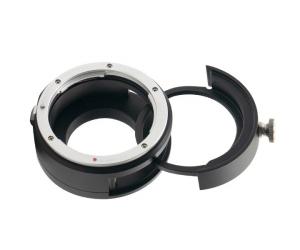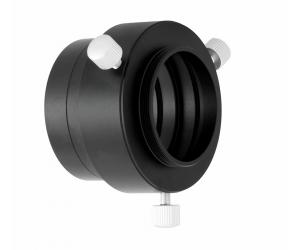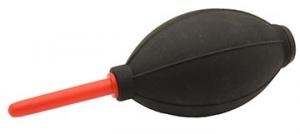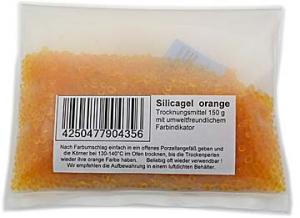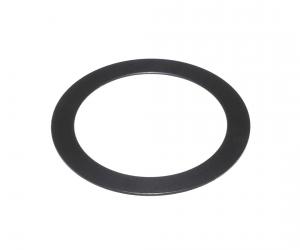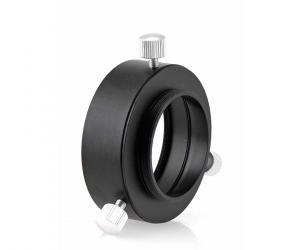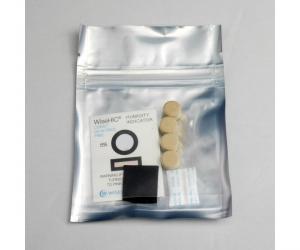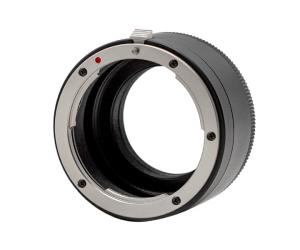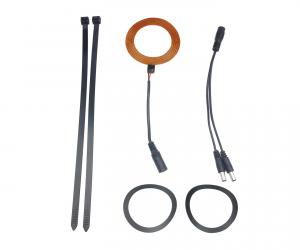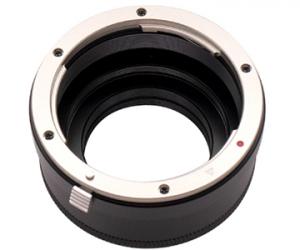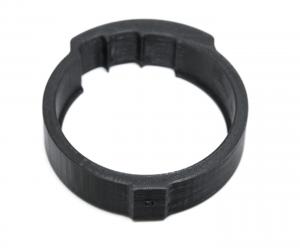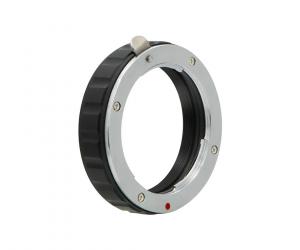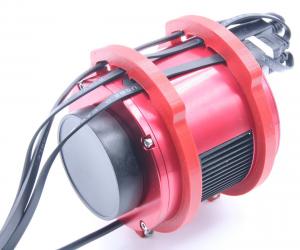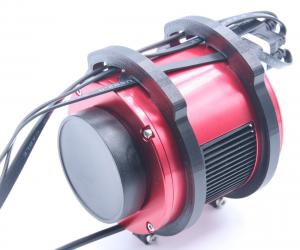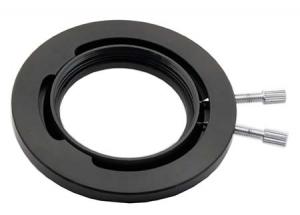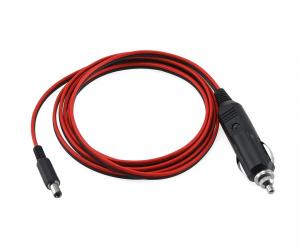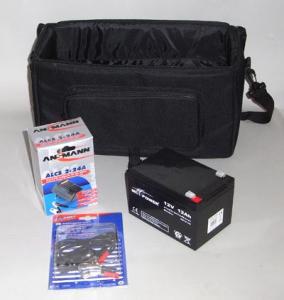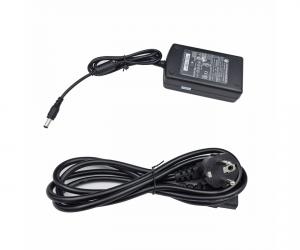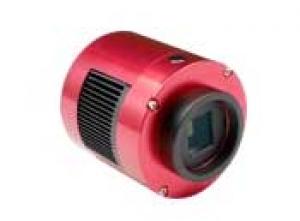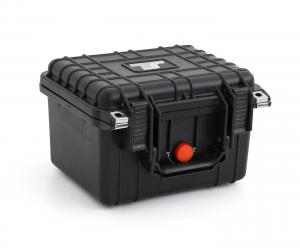- Telescopes
- Overview:
Telescopes - Achromatic Refractor
- Apochromatic Refractor
- Overview:
Apochromatic Refractor - ED Refractor - less color aberration than an achromatic
- SD APO - color free 2-element APO objective
- EDT APO - 3 element ED objective
- High End APO with 3-element APO objective - no color aberation
- Flatfield APO with flat field for Astrophotography
- All Apos and EDs from all manufacturers - large overview
- TS APO and ED from Japan with high quality optics
- Overview:
- Newtonian Telescopes
- Dobsonian Telescopes
- RC Ritchey Chretien Telescopes
- Casssegrain Telescopes
- Reflektor Telescopce with Lens Correcture
- Maksutov Cassegrain Telescopes
- GoTo Telescopes
- Solar Telescopes H-Alpha
- Overview:
- Mounts Tripods Rings Rails Power Supply ...
- Overview:
Mounts Tripods Rings Rails Power Supply ... - Mounts Equatorial with GoTo
- Mounts Equatorial without GoTo
- Mounts Azimutal with GoTo
- Mounts Azimutal without GoTo
- Mounts GoTo - Harmonic Drive
- Travel mounts for astro imaging
- Tripods Piers Polar Wedges
- Mount Control & Electronics
- Dovetail Clamps, Plates and Mount Adapters
- Tube Rings
- Power Supply
- Counterweights Balance Weights
- Mount Accessories - Other
- Overview:
- Telescope Accessories
- Overview:
Telescope Accessories - Eyepieces
- Barlows & Reducer Lenses
- Diagonal Mirrors and Prisms
- Binocular Viewers
- Finder Scopes
- Telescope Collimation and Test
- Cleaning Tools
- Transport and Storage
- Dust protection for Telescopes & Accessories
- Stray Light Protection
- Dewcaps and Heater
- Focusers, Adapters, Motorfocus
- Telescope DIY & Improvement
- Other telescope accessories
- Replacement Parts
- Overview:
- Filters
- Overview:
Filters - Color Filters and Color Filtersets
- Nebular Filters for Visual Observing
- Neutral-Density and Polfilter
- Photo Narrowband Nebular Filters
- Photo Broadband Filters
- Photo Planetary Filters
- Photo R-G-B and IR Cut Filters
- Photo - Filtersets
- Photometric Filters
- Clip Filter for DSLR Cameras
- Filter Wheels and Filterslider
- Solar Filters for white light
- Solarfilter for H-Alpha and Calcium
- Overview:
- Adaptors
- Overview:
Adaptors - Adapter 1,25" and 24,5mm
- Adapter 2"
- Adapter T2 - M42x0.75
- Adapter M48x0,75
- Adapter M54
- Adapter SC
- Adapter M63
- Adapter M68
- Adapter to other Threads
- Adapter Extensions
- Adapter camera bayonet
- Adapter Objective Filterthread
- Adapter Quick Changing , Rotation
- Adapter Eyepiece Projection
- Adapters Tilting
- Overview:
- Astrophotography and Photography
- Overview:
Astrophotography and Photography - Cooled Cameras
- Cameras without Cooling
- Deep-Sky Cameras uncooled
- Set-Offers Camera, Filter, Wheels
- Acessories for Cameras
- Travel mounts for astro imaging
- Imaging Correctors for Telescopes
- Autoguiding Cameras & Sets
- Everything for Guiding
- Focusing aids - Bahtinov mascs
- Flat Field foils and boxes
- Lenses for Cameras
- Piggyback Camera Holder
- Camera Bags, Photocases & more
- Digital Camera and Smartphone Adapter
- Other photo accessories
- Overview:
- Binoculars, Spotting Scopes, Microscopes, Range Finders
- Overview:
Binoculars, Spotting Scopes, Microscopes, Range Finders - Spotting Scopes and Acessories
- Roof Prism Binoculars
- Binoculars with Porro prisms
- Binoculars from 100mm Aperture
- Binoculars with 1,25 inch eyepieces
- TSMX APO Binoculars
- Binoculars for Astronomy
- Binoculars Hiking Bird watching
- Monoculars - Opera Binoculars
- Accessories for Binoculars
- Range Finders
- Microscopy
- Bags for Phototripods & Binoculars
- Overview:
- Phototripods and Binomounts
- Books, Software
- Overview:
Books, Software - Books for Astronomy Beginners
- Star Charts and Planispheres
- Books about our Solar System
- Observing Tips for Amateurs
- Popular Astronomy Literature
- Teaching material
- Astrophotography books
- Telescopes, Observatories, Construction
- Calendars Yearbooks
- Software, Star Charts
- Books for Microscopers
- Books Nature and Animals
- Nature Photography TimeLapse
- Overview:
- Night Vision, Magnifiers, Weather, Domes & more
- Beginner Astronomy and Gift Ideas
- Second Hand & Special Offers
- New products
Manufacturer: ASI - ZWO
Product number: ASI533MC-P
EUR979.00new
EUR 979,00RRP EUR 1.390,00you save 29.6% (EUR 411,00)
incl. 19 % VAT (DE)
The VAT indicated refers to that applicable in Germany. After logging in, the VAT amount is adjusted to the applicable VAT of the stored delivery country. Therefore, the final price may vary accordingly.
excl. 6.95 € shipping costs (DE)
more details to the shipping costs ...Please log in to calculate shipping costs to your country.
rating: 5.0 of 5ZWO Color Astro Camera ASI 533MC-PRO cooled, Sensor D= 16 mm, 3.76 µm Pixel Size3
- Details..
- Technical data..
- In the box..
- Reviews..
- FAQ..
- Manufacturer infos..
- Safety informations..
ZWO ASI533MC Pro - powerful color astro camera of the latest generation
ZWO has taken another step forward with this new camera. The colour sensor with a diagonal of approx. 16 mm can be used on almost every telescope. Due to the square shape, the corrected image field of the telescope is optimally used. This even allows the use of many telescopes without a corrector.A special feature of the ASI533MC Pro is the zero-amp glow circuit, which eliminates the amplifier glow that occurs with longer exposure times. This would brighten areas of the image at longer exposure times. Especially with this camera, the electronics also reduce the effect of external stray light, so you can take longer exposures under light-polluted skies.
One of the outstanding features of the ASI 533MC Pro is its sensational light sensitivity. The QE of 80% by the BACK ILLUMINATION technology and the very low amplifier glow make the camera very suitable for all astronomical applications, but especially for deep-sky astrophotography.
The "single shot" colour camera offers more comfort than monochrome cameras. Not everyone wants to go through the laborious L-RGB process for beautiful coloured nebula or planet images. The color cameras offer you the possibility to get beautiful pictures without changing filters. In direct comparison to the DSLR camera, the ASI camera convinces with a much higher light sensitivity, a smoother image and significantly more depth. Stars don´t burn out that easy.
Further advantages and product features of the ASI 533MC Pro color camera:
Application areas of the camera:
Back illumination technology
Sony´s back-illuminated CMOS image sensor improves sensitivity and noise reduction ? the key factors to enhancing image quality, while radically realigning their fundamental pixel structure from front-illumination to back-illumination. It has retained the advantages of CMOS image sensors such as low power consumption and high-speed operation.The backside exposure improves the light absorption and increases the amount of light at the same time. This allows significantly shorter exposure times and leads to an improved quantum efficiency of 80%.
Sony has newly developed a unique photo-diode structure and on-chip lens optimized for back-illuminated structures, that achieves a higher sensitivity and a lower random noise without light by reducing noise, dark current and defect pixels compared to the conventional front-illuminated structure.
Zero amp glow
Traditional CMOS sensors produce a weak infrared light source during operation quite often seen in the corner of uncalibrated images as the tell tale signs of ?amp glow?. As the ASI533MC Pro uses zero amp glow circuitry, you won?t have to worry about amp glow even when using high gain, long exposure imaging.Important: external power supply required!
Please notice that all ZWO cameras with cooler need to be connected to an external 11-15 V power supply to work.Even when the cooler is not being used the power supply must be used for the camera to be reliably recognized.
Optimal support before and after the purchase through Teleskop-Service:
We work with the cameras ourselves and can offer you optimal advice. Which camera fits to your telescope, how do you achieve the optimal adaptation? Teleskop-Service is one of the largest ZWO dealers. Through our contacts we also offer the best possible service after the purchase.Practical tip 1 from TS: Integration of 2" filters, 360° rotation and quick coupling
The camera is often used on correctors that do not have a filter thread. In addition, the filters should always be used as close as possible to the camera. Here we offer you a solution that can do much more.The adaptation is very simple, the 21 mm T2 extension is replaced by:
One tuning ring comes to the camera side, one tuning ring comes to the telescope side of the rotator. Then screw on the M42-M48 adapter with 16.5 mm length and you are in the right distance with the camera.
Practical tip 2 from TS: Storage of cameras and accessories
Especially in our latitudes, the nights are often very humid. This humidity condenses on your camera, eyepiece or filter when they come into the warm interior of the apartment. Especially cooled cameras are affected by this. Quickly a photo session is over because the sensor ices up.Good storage is an important prevention against dew and also extends the life span.
After use, put the camera immediately into the TS Protect Case and add some silica gel. During storage, the silica gel will suck the moisture out of the camera. At the same time, the penetration of humid room air is prevented. Dry storage even allows the small dry tablets in cooled cameras to partially regenerate. Your camera or accessories are always ready for you in optimal condition. You can find the silica gel and the case in our product recommendations.
The cameras are not airtight, so if the camera remains on the telescope, it is exposed to moisture. The small amount of desiccant in the camera can protect the sensor and the inside of the protective glass from moisture for the duration of the exposure, but not for days on end. Moisture problems can be the result. A simple trick is to stretch a plastic bag around the focuser to which the camera is attached so that no air can get in. Silica gel is placed in a small cloth bag inside the plastic bag. This will also create a "dry climate zone" for the camera on the telescope. This allows you to leave the camera on the telescope for a few days for an imaging session lasting several days.
In the medium and long term, however, this is no substitute for proper storage in an airtight case with silica gel.
Downloads, drivers:
ZWO provides software and drivers online for free download.Software and drivers for all ZWO cameras
Frequently asked questions about ZWO cameras:
The FAQ area is constantly updated by ZWO, here you will find answers to many questions.FAQ about ZWO cameras
ZWO Users Forum
Manuals for ZWO products:
The manuals page is constantly updated by ZWO, here you can find user guides for ZWO products.Link to the manuals
How to clean my ZWO camera:
The manufacturer provides a manual that covers how to clean an ASI camera and regenerate the desiccant tablets: Please click here.Mit dieser Kamera erzielte astrofotografische Ergebnisse auf Astrobin
Hier finden Sie einige Astrofotografien, die mit diesem Kameramodell gemacht wurden: Link zu Astrobin| Sensor: | Sony Color IMX533 square back-illuminated CMOS |
| Sensor size: | 11.31 mm x 11.31 mm - 15.97 mm diagonal |
| Pixel size: | 3.76 µm |
| Pixel number: | 9 megapixels, 3008*3008 |
| Exposure range: | 32 µs to 2000 s |
| ADC: | 14 bit |
| Full well: | 50 ke |
| Readout noise: | 1.0 to 3.8 e |
| Sensitivity: | Peak 80% QE |
| Frame rate at maximum resolution: | approx. 20 fps (approx. 54 fps at Full HD) |
| Cooling: | Powerful Peltier cooling |
| Power consumption: | 12 V, 3 A |
| Telescope connection: | M42x0.75 female thread |
| Protection glass: | D32-2-AR protection glass with full IR transmission |
| Working distance from female thread to sensor: | 17.5 mm |
| Height of the thread adapter ring: | 11 mm |
| Working distance from front surface to sensor: | 6.5 mm |
| Diameter: | 78 mm |
| Weight: | 470 g |
Mit dieser Kamera erzielte astrofotografische Ergebnisse auf Astrobin
Hier finden Sie einige Astrofotografien, die mit diesem Kameramodell gemacht wurden: Link zu AstrobinImage from our customer Bert Moyaers
Our customer Bert Moyaers from Kampenhout (Belgium) took a picture of NGC 6888 with this camera: Object: Crescent Nebula (NGC 6888)
Object: Crescent Nebula (NGC 6888)Photographer: Bert Moyaers
Date: 28.10.2021
Telescope: TS Photon 150 f/5 (TPM6F5)
Motor fokuser: ZWO 5V EAF Advanced
Coma corrector: TS-Optics TSGPU
Filter: Optolong L-eXtreme2
Camera: ZWO ASI533MC Pro
Guiding scope: TS-Optics 50 mm Guiding Scope (TSL501)
Guiding camera: ZWO ASI120MC-S
Mount: Explore Scientific EXOS2-GT with PMC-Eight
Frames: 56x300" (4h 40´)
A few days later NGC 869/884 were photographed with almost the same equipment (only different filter):
 Object: Double cluster in Perseus (NGC 869 and NGC884)
Object: Double cluster in Perseus (NGC 869 and NGC884)Photographer: Bert Moyaers
Date: 11.11.2021
Telescope: TS Photon 150 f/5 (TPM6F5)
Motor fokuser: ZWO 5V EAF Advanced
Coma corrector: TS-Optics TSGPU
Filter: Optolong L-PRO 2" (OPL-LPRO2)
Camera: ZWO ASI533MC Pro
Guiding scope: TS-Optics 50 mm Guiding Scope (TSL501)
Guiding camera: ZWO ASI120MC-S
Mount: Explore Scientific EXOS2-GT with PMC-Eight
Frames: 41x180" (2h 3´)
We congratulate Bert Moyaers for the beautiful astrophotos!
Question:
Will my Pro camera work without extra power supply if I don´t turn on the cooling?
Answer from Teleskop-Service:
No, the current Pro cameras always require extra power supply, even without cooling.
| Manufacturer / Importeur: | Teleskop-Service Ransburg GmbH |
| Street: | Von-Myra-Str. 8 |
| ZIP / City: | 85599 Parsdorf |
| Country: | Germany |
| Telefon number: | +49 89 99228750 |
| Email: | info@teleskop-service.de |
| Website: | www.teleskop-service.de |
Safety informations: PDF Download
Recommended accessories
Adaptors
Cleaning & Collimating
Customers who bought this product also bought...
General Accessories
Photo Acessories
Power Supply
Similar Products
ZWO MONO Astro Camera ASI 533MM-PRO cooled, Sensor D= 16 mm, 3.76 µm Pixel Size
EUR 1.190,00RRP EUR 1.599,00you save 25.6% (EUR 409,00)
Transport & Covers
TS-Optics Protect Case waterproof hard case - width 271 mm
EUR 34,98RRP EUR 44,95you save 22.2% (EUR 9,97)
Reviews
Written by Harald Welsch
on 2025-08-15
"Ich bin mit der Kamera absolut zufrieden. Das quadratische Format ist für die meisten Objekte ideal. Das Preis-Leistungsverhältnis empfinde ich als wirklich sehr gut"
Written by Bernd Moch
on 2025-08-04
"Mangels Wetter noch ungetestet... "
Written by Oliver Rieck
on 2024-09-24
"Sehr gute Farbkamera, gut verarbeitet, man kommt sofort mit ihr zurecht. Ich würde sie wieder kaufen!"
Written by Andre Thieme
on 2023-12-30
"Leider hatte ich noch keinen klaren Himmel um die Kamera ausgiebig zu testen :( Es ist nur eine Umgewöhnung auf den quadratischen Chip was mich bei der einen bisherigen Session anfänglich etwas irritiert hatte aber ansonsten bin ich begeistert da ich endlich von der DSLR gewechselt bin."
Written by Drazen Kostelac
on 2023-10-12
"alles top"
Written by Julien Creuels
on 2022-12-14
"Excellent camera. I´m a beginner and used it with the ASIAIR and a 94EDPH, first lights were impressive."
Written by Preben Thomsen
on 2022-01-25
"ser gut meget godt"
Written by Hermann Klingele
on 2021-09-11
"Perfekte Astrokamera, gute Pixelgröße, hoher Dynamikumfang, passt zum 8? f/6 Feld ohne Korrektor perfekt, dank Kühlung und kaum Hot Pixeln nicht mal Darks nötig. Gute Ergebnisse mit minimalem Aufwand!"
Written by Ibrahim Hasan
on 2021-05-12
"Schnell und zuverlässig.. wie es sein sollte. "
Written by Steffen Sachse
on 2020-10-03
"Meine 4 ASI. Funktioniert wie immer tadellos. Saubere Verarbeitung und umfangreiches Zubehör in einwandfreier Qualität. Der Weißabgleich bei Tageslicht ist aufgrund der Dominanz des grünen Kanals grenzwertig. Leider lässt der Treiber in Verbindung mit SharpCap keine Dämpfung des grünen Kanals am Livebild (!) zu. Bei astronomischer Nutzung ist das jedoch gar kein Problem. Es wäre natürlich genial, wenn die hohe Empfindlichkeit auf Ha liegen würde... "
Written by herwig sulzbacher
on 2020-08-25
"bildqualität sehr gut, verarbeitung sehr gut, lieferumfang komplett"
Written by Rui Loureiro
on 2020-07-06
Great OSC with a impressive sensor. I take some great images from my bortle 9 balcony. The back-illuminated sensor make a very good work.
Written by franz helmli
on 2020-05-07
"meine Meinung: - Kompakt - Preis ok - Bildqualität super - perfekt für die Verwendung mit ASI AIR"
Written by Tobias Zobel
on 2020-02-08
"Die Kamera ist für meine Teleskop noch recht gut geeignet. Obwohl die Pixelgröße für eine 70/350mm (quasi Quadruple) Optik schon grenzwertig ist. Bei mir funktioniert es dennoch ordentlich. Denke das liegt auch an meinem limitierten Beobachtungsort. Da kommt man schon gleich gar nicht an die Grenzen, wo die Pixelgröße dann relevant wird. Der Vergleich zu meiner vorherigen Kamera 178MC, (die keine Kühlung hatte), ist wohl eher unfair. Die 533 Ist definitiv eine klasse Kamera und durchaus eine Überlegung wert. Auch weil man damit noch 1.25? Filter verwenden kann, was bei manch einer größeren Kamera nicht mehr geht. Für mich ist es eine reine Kosten- / Nutzenentscheidung gewesen. Mein Teleskop könnte auch einen Vollformatsensor ausleuchten und hat einen 2? Anschluss. Ich habe aber keinerlei Filter oder sonstiges Zubehör für 2?. Der Lieferumfang ist gut. Ich habe keine zusätzlichen Adapter benötigt. Nur die würde ich noch eine Anti Tau Heizfolie dazu empfehlen. Dann kann man meiner Meinung nach eigentlich mit dieser Kamera nichts falsch machen (wenn sie zur Optik passt). Für ?Besserbetuchte? ist natürlich die 2600 oder gar die 6200 auch eine Option. Dann aber eben nur mit 2? Zubehör. ***"




















